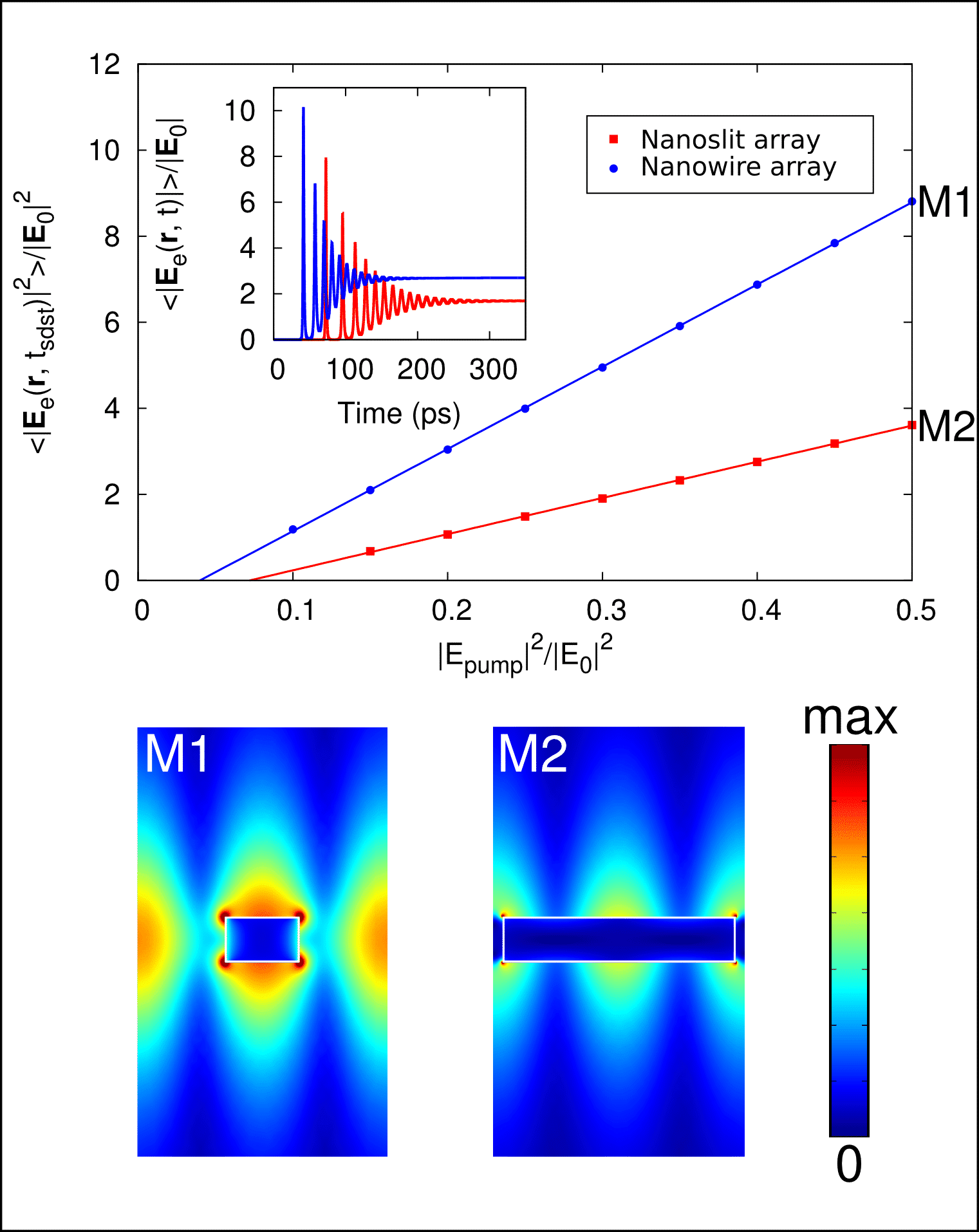
Spatio-Temporal Dynamics of Lasing Action in Plasmonic Crystals
Plasmonic nanostructures offer great potential for achieving lasing action at the subwavelength scale [1]. Very recently, periodic metallic nanostructures (plasmonic crystals) have demonstrated that plasmon-assisted lasing action is not restricted to single nano-cavity systems, but can also be observed in structures supporting extended plasmonic resonances [2],[3].
In this contribution, we present a theoretical study of the dynamics and steady-state characteristics of lasing action in plasmonic crystals consisting of periodic arrays of metallic nanowires and subwavelength apertures embedded in an optically-pumped four-level gain medium. We present a novel computational formalism based on a time-domain generalization of the finite-element method, which can account for the full spatio-temporal dynamics of the non-linear interaction of the gain medium and the highly-nonuniform electric field of plasmonic resonances [4].
This new theoretical framework allows us to optimize the lasing characteristics of the considered structures, with respect to both the geometrical parameters and the emission properties of the molecules forming the gain medium. We find that dark modes supported by these plasmonic crystals enable accessing the optimal lasing characteristics of this class of systems. Moreover, our study reveals that, in general, arrays of nanowires feature lower lasing thresholds and larger slope efficiencies that those corresponding to periodic arrays of subwavelength apertures [5].

[1] J. Bravo-Abad and F. J. García-Vidal, Nature Nanotechnology (News and views) 8, 479 (2013).
[2] W. Zhou, M. Dridi, J. Y. Suh., C. H. Kim, D. T. Co, M. R. Wasielewski, G. C. Schatz, and T. W. Odom, Nature Nanotechnology 8, 506–511 (2013).
[3] F. van Beijnum, P. J. van Veldhoven, E. J. Geluk, M. J. A. de Dood, G. W. ’t Hooft, and M. P. van Exter, Physical Review Letters 110, 206802 (2013).
[4] F. Rüting, J. Cuerda, J. Bravo-Abad, and F. J. García-Vidal, Laser Photonics Rev. 8, 5 (2014).
[5] J. Cuerda, F. Rüting, F. J. García-Vidal, and J. Bravo-Abad, (submitted, 2014).
javier.cuerda@uam.es
Powered by Eventact EMS